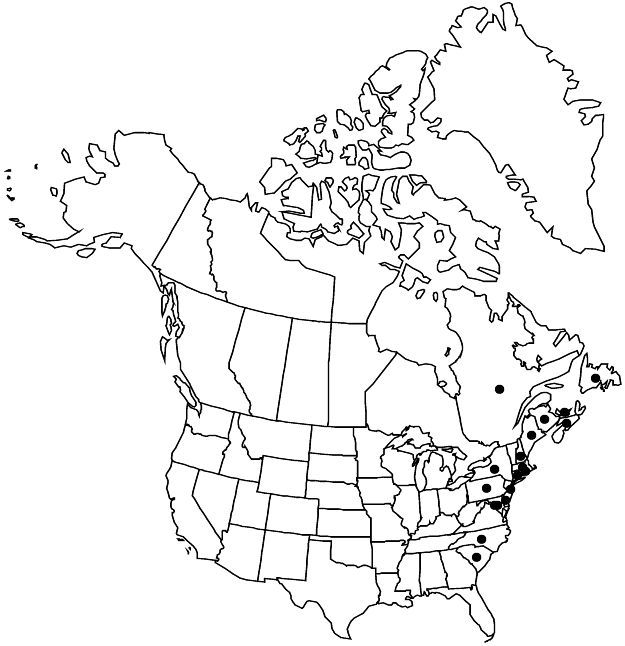Gaylussacia bigeloviana
J. Bot. Res. Inst. Texas 1: 336. 2007 ,.
Plants (3–)6–10 dm, forming small colonies; branches ascending to ± spreading; twigs of current season grayish brown, puberulent and glandular-hairy. Leaves: petiole to 1.5 mm; blade light green abaxially, shiny dark green adaxially, oblanceolate to obovate, 2–4 × 1–2 cm, subcoriaceous, base cuneate, margins entire (scattered stipitate-glandular-hairy and ciliate, 7–10 cilia per mm), apex obtuse to subacute, mucronate, surfaces persistently stipitate-glandular-hairy and sessile-glandular. Inflorescences erect or arching, 3–7-flowered, bracteate, 2–5 cm, stipitate-glandular-hairy and hairy; bracts persistent, leaflike, 2–5 mm, expanding to 5–10 mm, longer than pedicels, densely stipitate-glandular-hairy (hairs 0.3–0.5 mm). Pedicels 2–4 mm, stipitate-glandular-hairy; bracteoles 1–2, 2–5 mm. Flowers: sepals 5, 2 mm, densely stipitate-glandular-hairy (hairs 0.3–0.5 mm); petals 5, corolla white to pink or reddish, campanulate, 6.5–7.5 mm (averaging 7 mm), lobes triangular, 1.2–1.7 mm; filaments 0.3–0.5 mm, moderately hairy; anthers included, 3.2–4 mm (averaging 3.7 mm), thecae divergent distally; ovary stipitate-glandular-hairy (hairs 0.3–0.5 mm). Drupes juicy, insipid, black, 6–8 mm diam., moderately glandular-hairy. Seeds 1.7–2 mm.
Phenology: Flowering late spring–early summer.
Habitat: Wet, acidic, peat bogs, sphagnum-shrub swamps, beaver wetlands, Atlantic white cedar swamps, peat-based pocosins
Elevation: 0-500 m
Distribution

N.B., Nfld. and Labr. (Nfld.), N.S., P.E.I., Que., Conn., Del., D.C., Maine, Md., Mass., N.H., N.J., N.Y., N.C., Pa., R.I., S.C.
Discussion
Gaylussacia bigeloviana has been confused with G. dumosa; there are points of difference, including plant height, corolla size, vestiture, habitat, and the northeastern-centered range of G. bigeloviana. Occurrences in North Carolina are in large, peat-based pocosins that lie mostly within Carolina bay geomorphological formations. The single South Carolina population occurs in an Atlantic white cedar wetland.
Selected References
None.